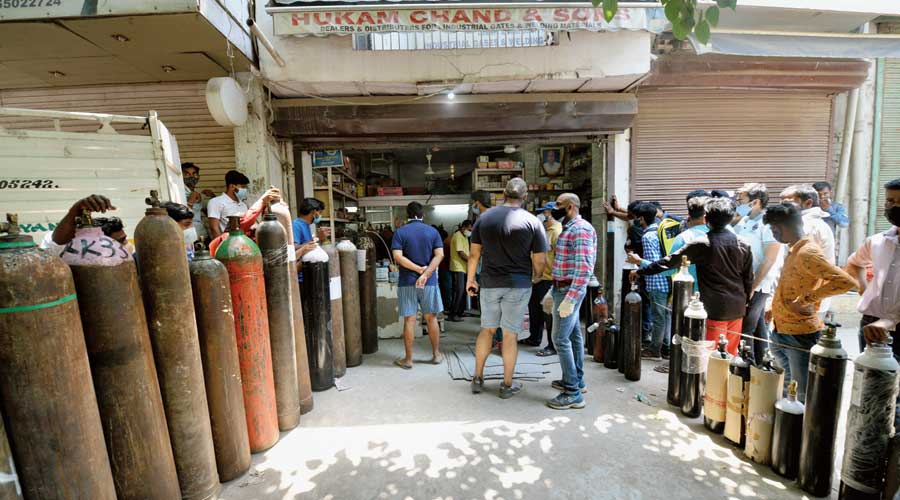As Covid-19 cases and deaths exploded in India in April and May, New Delhi’s premier Sir Ganga Ram Hospital and several others ran so short of oxygen that many patients in the capital suffocated.
Hospitals have learned from the bitter experience during the second Covid wave, when funeral pyres burned non-stop and bodies littered the banks of the Ganga.
Ganga Ram is raising its oxygen storage capacity by 50 per cent, has laid a one-kilometre-long pipeline carrying the gas directly to Covid ICUs, and is installing equipment to keep the oxygen flow high. It has also ordered an onsite oxygen-generation plant, which are mostly made in Europe.
“In light of the possibility of the emergence of coronavirus mutants, with higher transmissibility and immune escape, the hospital continues to prepare for the worst,” said Satendra Katoch, medical director of the hospital.
The crowded private hospital, however, said it had no scope to add more beds. During the peak of India’s second wave, Ganga Ram expanded its capacity by nearly 50 per cent to about 600 beds, but even so, some 500 patients per day had to be put on a waitlist for admission, according to physician Varun Prakash, who managed its war-room during the crisis.
Nationally, India has imported more than 100 oxygen carriers to raise the total to about 1,250. Companies such as Linde are planning to lift the country’s overall output of oxygen by 50 per cent to 15,000 tonnes a day.
Linde told Reuters it had retained 60 of some 80 cryogenic containers — meant to hold super-cooled oxygen — it had brought in from the company’s overseas operations, in case demand shot up again.
“The distribution infrastructure and logistics fell short during the second wave,” Linde South Asia head, Moloy Banerjee, said.
Almost all states are readying special paediatric wards as some experts warn unvaccinated children could be vulnerable to any new virus mutations.
But with a government survey estimating as many as two-thirds of Indians already have Covid-fighting antibodies through natural infection, and 57 per cent of its adults with at least an initial vaccine dose, many health experts believe any new outbreak could be less devastating than the second wave.
“The number of susceptible persons will be less now, as many persons have been infected or vaccinated,” said epidemiologist and cardiologist K. Srinath Reddy, president of the Public Health Foundation of India.











